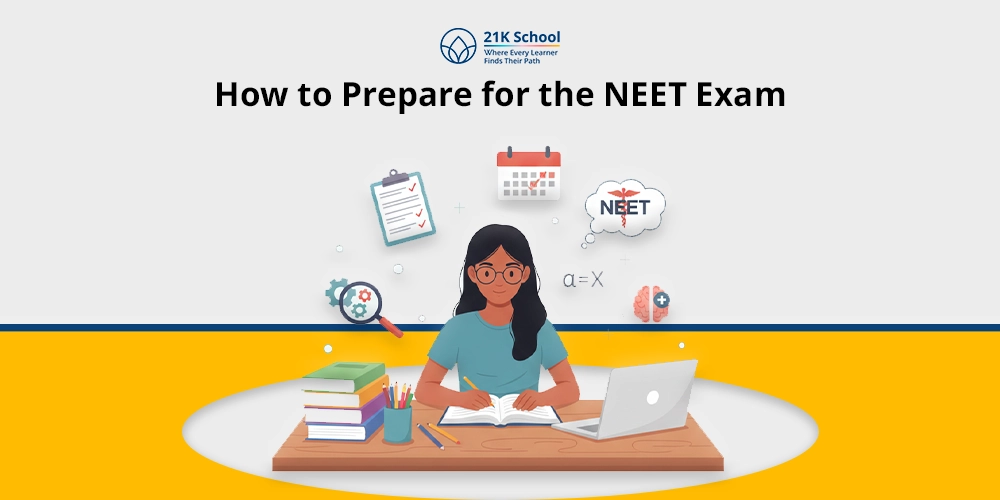
Formative assessment tools are very essential methods of identifying the performance of the students. Formative assessment tools enable both the teacher and the student to track advancement toward meeting learning goals.
The term formative assessment describes instruments that detect learning gaps difficulties and misconceptions along the way and evaluate how to bridge them.
Formative assessment helps students and teachers to improve learning strategies and teaching techniques .
Teachers can support students learning by providing clear instructions and feedback as well as by actively encouraging students to evaluate their own abilities and retention of knowledge.
Contents
Features of Formative Assessment Tools
Formative assessment tools are an incredible way to identify the problems, and performance as well as also help in evaluating the abilities of students.
Formative assessment is not only limited to educational grades but also focuses on students’ overall performance and future growth. Below you can check the features of the formative assessment tool.
1. Child’s Engagement:
One of the effective features of the formative assessment tools is enhance child engagement. Through formative assessment tools, students will develop engagement through activities and discussions.
2. Multiple Methods:
Formative assessment tools have lots of methods, that develops students’ engagement and curiosity.
Formative assessment tools include various assessment forms such as quizzes, group discussions, peer to peer education and so on.
3, Instant Feedback:
Formative assessment tools are an incredible way to provide quick feedback.
Consistent feedback is given to students and teachers through which they can gather information about their learning to guide their lessons and concepts.
4. Bridging Learning Gap:
Formative assessment tools help in identifying the gaps and requirements needed for the student’s learning ability.
Through formative assessment, teachers can find the gaps and help to bridge the gap through better understanding and techniques.
5. Learning-Centered Approach:
One of the major features of Formative assessment is it focuses on the needs of the students and teachers.
It helps in gaping the requirements of the children and develop analytical skills and knowledge. Through this teachers can also focus on the needs of the students and can adapt according to their needs.
Types of Formative Assessment Tools
Formative assessments have lots of tools and offer a flexible way of teaching-learning approach to both students and teachers.
This tool gives better clarity and helps in understanding the necessities of children. Below you can check the types of formative assessment tools.
1. Google Forms:
Google Forms is one of the most effective tools for surveys and quizzes. It is a free and useful tool for teachers and students as well.
Teachers can use these tools to create charts graphs and other visual aids to help students understand various concepts and enhance their learning outcomes.
2. Kahoot:
Kahoot is an effective response-based tool used by teachers and students to promote various fun learning activities .
Kahoot has a game-like interface that allows kids to become more engaged and participate in quizzes and games. This makes it possible for teachers to ask MCQs, quizzes, gameplay and so on.
3. Quizzezz:
Quizizz is an effective formative assessment tool that has many advantages for both teachers and students.
This platform allows teachers to create assessments that are tailored to their classroom needs, give immediate feedback on students’ progress boost student engagement and obtain data-driven insights into student performance.
4. Mentimeter:
Mentimeter is an incredible tool for assessment. It offers various study tools and resources to conduct class polls, feedback, quizzes and so on.
Through mentimeter teachers can control their classes and understand the essential feedback of students.
5. Padlet:
Padlet is an efficient tool for online education . Through Padlet students and teachers can post their notes.
It enables people especially teachers and students to share resources queries, and comments in a single location that is readily available to all.
6. Ed Puzzle:
Ed Puzzle is an interactive online video platform that is student-centric.
Through Ed Puzzle teachers can create video lessons on quizzes, MCQs, lessons, and concepts, they can also include images or audio to make it more interactive.
7. Exit Puzzle:
Exit puzzle is a type of game that allows students and teachers to communicate
in a variety of ways. In exit puzzles, teachers can create puzzles and riddles, in which students have to solve them.
This tool is very ideal for young kids who want to explore the world of imagination.
Think Pair Share is an engaging collaborative tool. This method focuses on the teaching-learning experience through a cooperative method.
In this method, students can share their thoughts, presentations, and activities in a group or individually.
9. One-minute Paper:
This is a formative assessment tool that allows teachers to understand the learning areas and where improvement is needed.
In this method, students were given a response paper at the end of the class which they needed to respond to the paper within 60 seconds.
10. Whiteboards and sticky notes:
Through white boards and stocky notes students can write their reminders, to-do lists, messages, doubts and other questions.
This allows teachers to understand the needs of the child and allows them to work efficiently.
11. Near Pod:
It is another formative assessment tool. This helps teachers to make any lesson interactive virtually or in regular mode.
Interactive presentations that include polls, videos, quizzes, collaborative boards and other elements can be made by an educator.
12. Pear Deck:
Pear Deck is a well-known formative assessment tool that lets teachers create interactive presentations and involve students in the learning process with interactive maps, multiple-choice questions, text-based and drag-and-drop prompts and so on.
13. Flipgrid:
Flipgrid is an online video discussion app, that allows teachers and students to collaboratively discuss various topics. This is an incredible tool to understand the children’s needs and helps them to fix the issues.
Also Read,Difference between Assessment and Evaluation .
How to Choose the Right Formative Assessment Tools
There are various types of formative assessment tools that allow teachers to understand the abilities of kids.
Always choose an assessment tool that engages students meets a range of needs corresponds with learning standards and offers comprehensive performance data. Here is how you can choose the right assessment tools.
- Engaging: A formative assessment tool must be engaging, whether you are using an online method or offline method a tool must be engaging and grab students’ attention. These tools must allow kids to have proper understanding and easy interface and must be more empathetic and easy.
- Adaptable: While choosing an assessment tool always keep in mind that it should be adaptable. This adaptive feature enhances concentration and perseverance during each assessment task by tailoring the content level of difficulty to each student’s needs.
- Multimedia Components: Always choose an assessment tool that has multimedia components such as images, graphics, videos and so on. This will engage more kids to participate in formative assessment and allow them to interact more efficiently.
- Data Driven: An assessment tool must have to be data-driven. A data-driven tool allows teachers to collect the data more easily and helps them understand where the improvement is needed. A data-driven formative assessment tool will allow kids to have an effective response.
- Real-Time Feedback: Always choose a formative assessment tool that have real time feedback ability. Through this students comprehension agency and self-awareness while completing test items are enhanced as a result.
Benefits of Using Formative Assessment Tools
Formative assessment tools have numerous benefits that helps students as well as teachers to gain positive experience. The benefits of using formative assessment tools is mentioned below.
- Academic Achievement: Formative assessment tools helps in achieving academic goals. Through assessments can understand their knowledge gaps and improve their academic performance and advance toward their educational objectives.
- Enhance Engagement: Formative assessment tools can support higher levels of involvement. is another benefit of relating learning objectives to issues and circumstances in the real world.
- Boost Motivation: Through formative assessment, students can boost their motivation . Through assessments, students can develop learning goals that help in improving performance goals and achieving their academic goals.
- Achieve Future Goals: Formative assessment helps in achieving future goals. Through formative assessment, teachers can intervene and resolve any problems of students by monitoring student progress which helps guarantee that students are moving toward established learning objectives.
Also Read, 5 Apps to Keep Track of Your Study Progress .
- Data Based Information: Data gathered through formative assessment helps teachers to understand the learning efficiency of students. This helps teachers approach the material in the classroom more wisely and intelligently.
Challenges and Solutions of Formative Assessment
Formative assessments has lots of benefits but have various challenges such as resistance to change, lack of teacher training, and time constraints, collaborative development, technology integration, and strategic assessment selection are some of the solutions for the challenges.
Below you can check the challenges and Solutions of assessments
Challenges of Formative Assessment
Lack of Time: Due to formative assessment it can be difficult for teachers to find enough time to properly administer and evaluate formative assessments.
- Unchangeable: New assessment techniques may be resisted by teachers and students particularly if they believe they are already overworked.
- Lack of Students engagement: Lack of student engagement is one of the major reasons for challenges. Due to this teachers find it tough to deal with students.
- Lack of Technical Knowledge: One of the challenges is that some teachers don’t have a proper idea about formative assessment tools and are not equipped with the abilities and don’t know-how to use and analyze formative assessment results.
- Student Teacher Ratio: Due to improper teacher student ratio giving prompt, personalized feedback to a large class of students can be challenging for teachers.
Solutions of Problems
Effective Strategy: To overcome the challenges select formative assessment techniques that are effective and efficient for the particular learning goals.
- Proper Training: It is essential to train teachers and give them opportunities to grow as professionals in formative assessment techniques. Through proper training this challenge can be overcome.
- Engage Student Activities: To overcome the challenges of formative assessment it is essential to involve students in the assessment process by providing opportunities for self-reflection and peer feedback.
- Use Technology: To enhance technical knowledge it is essential to utilize more and more technology in daily life. Utilizing tech in schools helps both teachers and students to get a proper understanding.
- Proper Student-Teacher Ratio: This can be developed through implementing a proper teacher-student ratio. 1 teacher for every 10 to 12 students is ideal for having proper learning outcomes.
Conclusion
Tools for formative assessment are essential for improving the learning environment for both instructors and students.
These tools help create a more individualized and productive learning environment by giving quick feedback spotting learning gaps and encouraging student involvement.
Teachers can modify their methods to fit the individual needs of their students thanks to the wide variety of formative assessment techniques available which range from collaborative strategies like Think Pair Share to digital platforms like Google Forms and Kahoot.
Even though there are obstacles like lack of technical knowledge and time constraints these can be addressed with the use of technology appropriate training and the implementation of efficient strategies.
In the end the utilization of formative assessment tools not only encourages academic success but also fosters a culture of ongoing development and student motivation setting the stage for future success.


